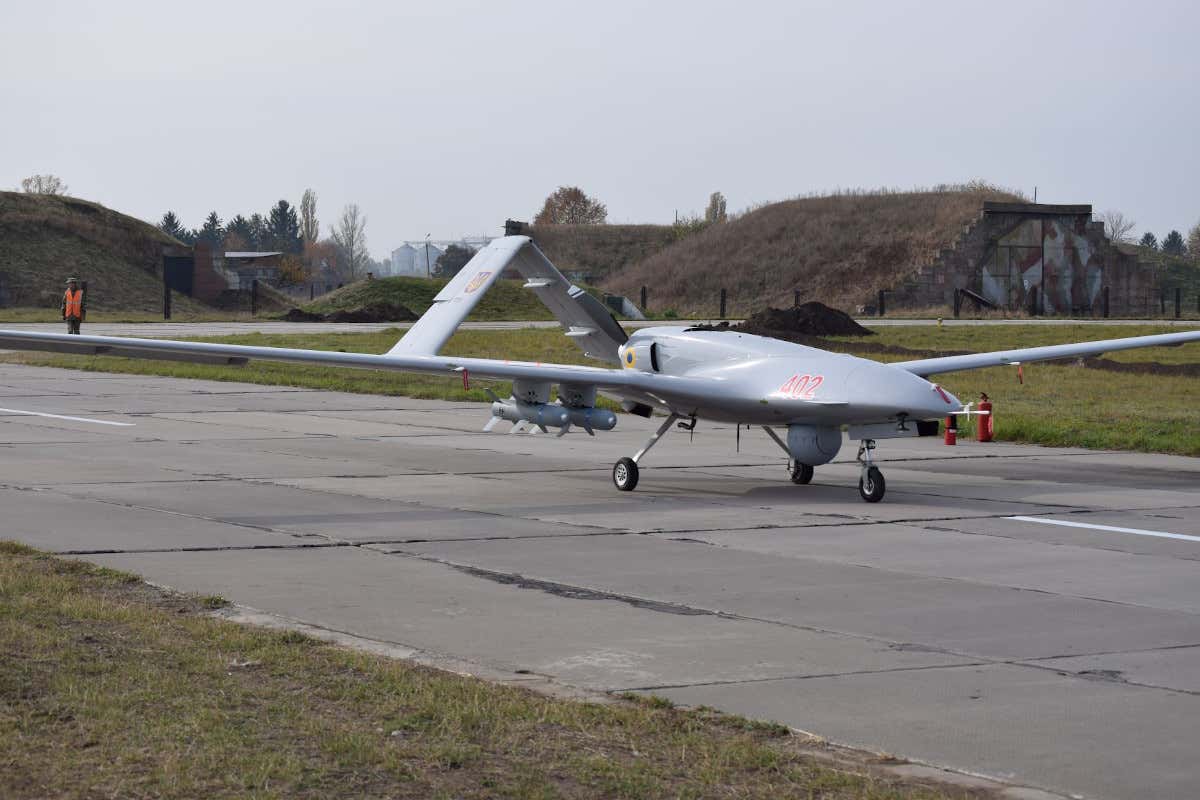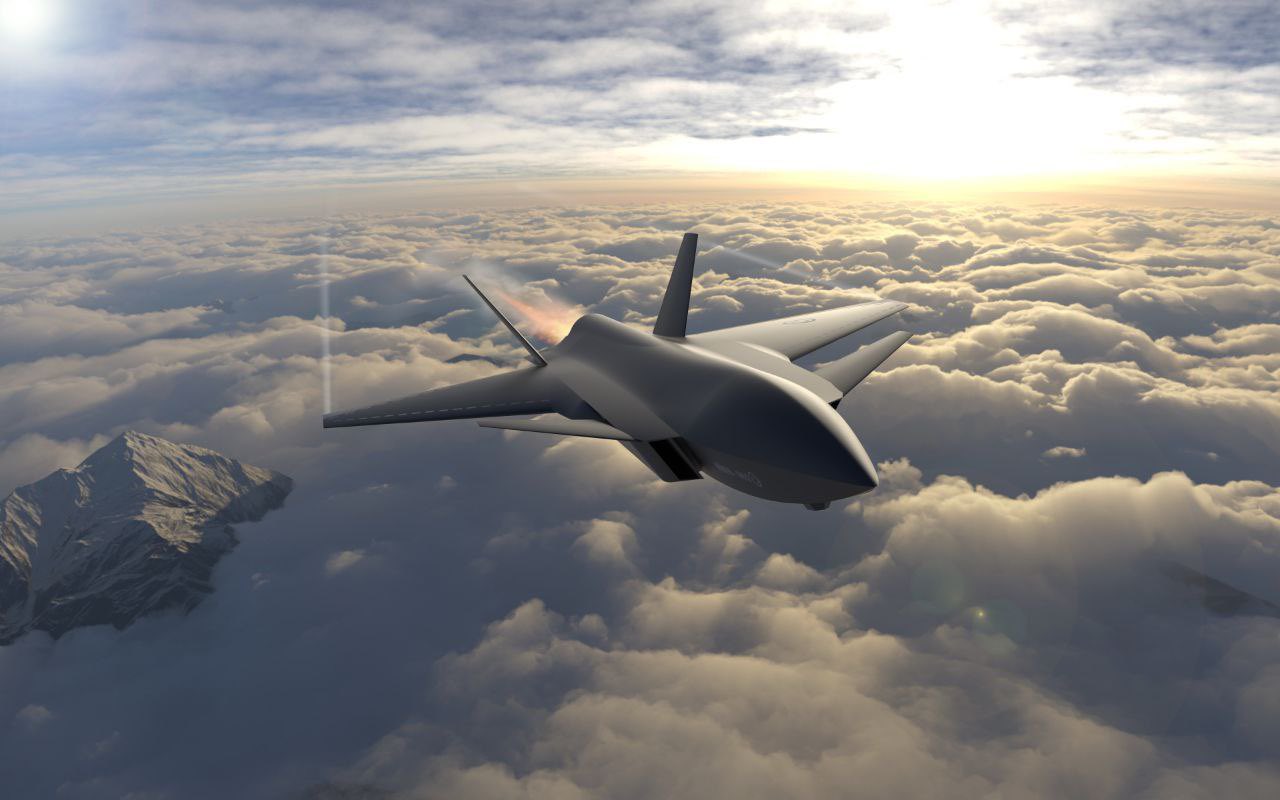In a first, Turkey’s indigenously built combat drone, Akinci successfully conducted live firing at a sea target, marking another achievement for Turkey’s Drone company, Baykar after the overwhelming success of its TB2 Bayraktar drones in Ukraine against the Russian military.
As part of the test ahead of its induction into the Turkish Navy, the Akinci drone struck a sea target using a TEBER MK-82 guidance kit.
During the test, a Bayraktar TB2 performed the laser designation on the target following which Akinci dropped an MK-82 bomb from an altitude of 20,000 feet (6 km) onto the floating target.
Reports suggest that the weather conditions were unfavorable for the laser search but the Akinci was able to complete the test successfully.
The TEBER-82, developed by Turkish manufacturer Roketsan, converts a regular gravity bomb into a more precise laser-guided munition.

Akinci Combat Drone
Developed as a successor to Bayraktar’s TB2 tactical UAV, the Akinci, Turkish for “Raider”, is a high-altitude, long-endurance unmanned aerial vehicle (UAV) capable of operations formerly performed only by fighter jets.
The drone is capable of performing both air-to-ground and air-to-air attack missions.
The company initially produced three prototypes, of which the first one took to air in December 2019. The flight test for the first mass-produced Akinci drone was completed in May 2021, following which the unmanned system was delivered to the Turkish Armed Forces in August 2021.
The combat drone has a length of 12.2m, a height of 4.1m, and a wingspan of 20m. It can fly at an altitude of 40,000 feet (12,192 meters), has a take-off weight of 5,500 kg, and carries a maximum payload of 1,350 kg.
The sensors onboard the drone include electro-optic/infrared/laser designation (EO/IR/LD), multi-mode active electronically scanned array (AESA) radar and signals intelligence (SIGINT) system. The drone uses advanced AI features to collect and process data received from onboard sensors and cameras.
The Akinci drone can be fitted with different weapon payloads such as laser-guided smart munitions, missiles, and long-range stand-off weapons. It completed its first firing test in April 2021 where it fired Rokestan-made laser-guided smart micro munitions (MAM), namely MAM-T (Long Range Variant), MAM-C (Thermobaric Variant), and MAM-L (High-explosive variant).
Among other weapons that the Akinci drone can fire, include the Cirit missile, mini smart munition Bozok, long-range anti-tank missile system (L-UMTAS) missile, MK-81, MK-82, MK-83 guided bombs (JDAM). The drone can also be armed with Gokdogan and Bozdogan air-to-air missiles, wing-assisted and SOM-A stand-off missiles.
Record-Breaking Altitudes
There are two variants of the Akinci drone. The initial model, Akinci A, the first of which was delivered to the Turkish military last year, is powered by two turboprop engines of 450 hp each, for a total of 900 hp whereas the later model announced in early March, Akinci B is powered by two engines of 750 hp each, for a total of 1500 hp.

These engines are provided by Ukrainian engine manufacturer Ivchenko-Progress.
The Akinci A first made headlines after breaking a Turkish aviation altitude record flying for 25 hours and 46 minutes at 38,000 feet (11.58 km) while carrying a payload of 1,360 kg over a distance of 7,500 km. While last month, the Akinci-B model broke that record by reaching an altitude of 40,170 feet (12.2 km)
To put the above in perspective, while an F-16 fighter jet can reach altitudes of 50,000 feet, it performs best between 30,000 to 40,000 feet.
Also, Haluk Bayraktar, the CEO of Baykar said in a tweet early last month that there is a third model, Aknici C with two 950 hp engines for a total of 1900 hp that “will soon take to the sky.”
Turkey’s Formidable Drone Power
In the past few years, Turkey’s drone industry, its products, and their performance, especially the Bayraktar drones, in various operations and conflicts have piqued the interest of military experts from across the world.

Turkey has emerged as a formidable drone power through the indigenous development of advanced technologies and the possession of highly capable systems and platforms. The effectiveness and efficiency of Turkish-made drones have decisively influenced the outcome on the battlefields of Syria, Libya, and Azerbaijan in line with Ankara’s interests.
The success of Turkish drones in various conflicts has attracted the interest of numerous countries.
Haluk Bayraktar revealed last month that the company has concluded two export contracts for the Akinci drone without specifying the countries to which the drone will be exported, neither the number of drones nor its value.
Will Pakistan Recieve Akinci Drone First?
Reports suggest that Ukraine, Pakistan, and Azerbaijan are among the first countries slated to receive the Akinci combat drone.
Interestingly, just days after Bayraktar’s announcement, Pakistan Air Force’s (PAF’s) Public Relations Department posted a video depicting its progress from the past to the present.
— DGPR (AIR FORCE) (@DGPR_PAF) March 11, 2022
In the video, various aircraft and weapon systems within the PAF’s fleet can be seen in action, including the Akinci combat drone, strongly suggesting Pakistan as one of the two possible countries to which the drone will be exported first.
That said, Akinci is certainly a huge step forward in Turkey’s drone strategy, which will act as a force multiplier for the Turkish military and play a huge role in advancing Turkey’s foreign and security policy goals.
- Written by Tanmay Kadam/EurAsian Times Desk
- Contact the author at etdesk@eurasiantimes.com
- Follow EurAsian Times on Google News




